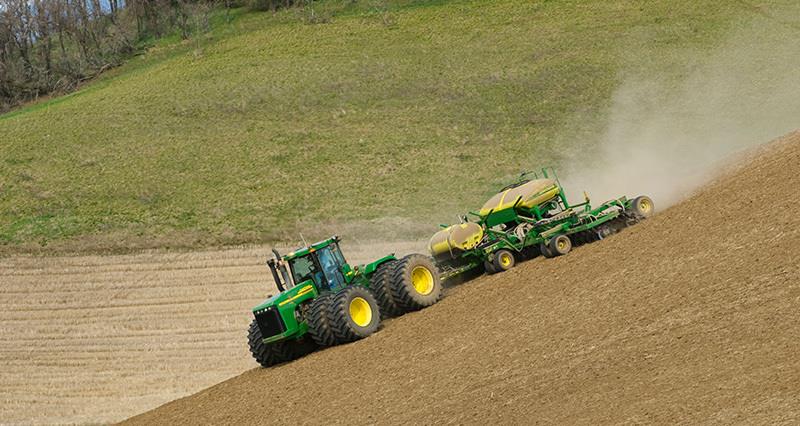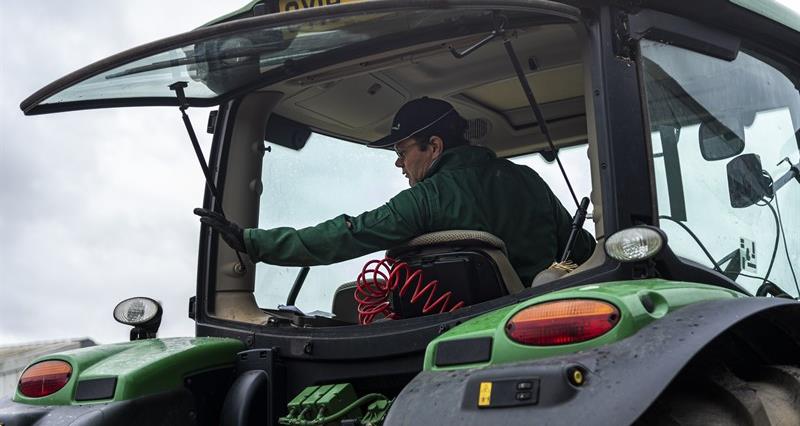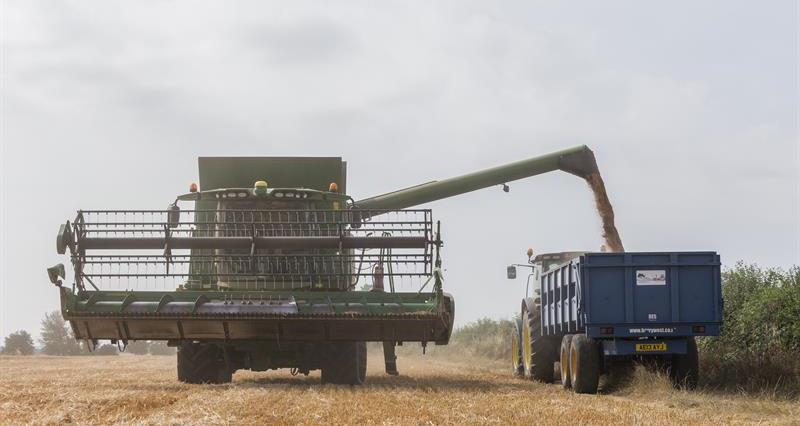Driving on a slope or incline is a frequent factor in cases of overturned vehicles. This is because ground conditions and gravity can have a significant impact on the ability to control the vehicle as it is going down the slope.
Many farms will have some slopes in the fields; some are steeper inclines than others, but care should always be taken when driving through any fields with a slope. This can include banks, ditches, drains, uneven ground such as land slips.
Vehicle checks:
- Ensure the vehicle is in good condition, especially the tyres and brakes, as these can be vital in helping to maintain the control of the vehicle. Wider wheels may be suitable for working on slopes.
- Ensure any tractor engaged in agricultural purposes has a ROPS (roll over protection system). The only exception to this rule is vintage tractors that are only used for exhibition purposes.
- Use a helmet with an ATV (All-terrain vehicle) or a seatbelt with a SBS (side-by-side) and a tractor.
- Keep the centre of gravity of the vehicle as close to the ground as possible.
- Never overload the vehicle or any trailer, implement or appliance attached to the vehicle, and ensure any load is appropriately secured.
Top tips for in the field:
- Consider if there are alternative ways to complete the task that do not require driving on steep slopes.
- Always try and use the shallowest slope when coming down a hilly field, especially if the ground is wet or loose making it harder for the vehicle to grip. Never assume that a slope is safe, as external factors such as rainfall can change the nature of the ground.
- Ensure any features like rocks or tree stumps are clearly identified, as these can easily cause the vehicle to overturn.
When driving on a slope:
- Ensure the vehicle is in 4x4 mode, even if the conditions may not suggest that 4x4 mode is necessary. This will give greater control to the vehicle.
- If you need to turn on a hill, always turn going up the hill rather than down the hill, but this should be avoided on steep slopes.
- Ensure the vehicle is travelling in an appropriate gear and at an appropriate speed.
- Avoid travelling a slope on the diagonal.
Training support
Even for experienced agricultural vehicle operators, training provides evidence of competency as well as additional information on how best to navigate slopes. Check out the following courses:



